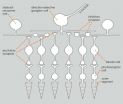(Press-News.org) So-called model organisms have long been at the core of biomedical research, allowing scientists to study the ins and outs of human disorders in non-human subjects.
In the ideal, such models accurately recapitulate a human disorder so that, for example, the Parkinson's disease observed in a rat model would be virtually indistinguishable from that in a human patient. The reality, of course, is that rats aren't human, and few models actually faithfully reflect the phenotype of the disease in question. Thus, in the strictest sense of the word, many "models" aren't truly models at all. To developmental biologist and Whitehead Institute Member Hazel Sive, this is no small matter.
"The term model is used very loosely," says Sive. "That was a problem to me: Everything's a model!"
Sive sees the need to adopt a new term to expand the language of biological research to encompass systems that, although not technically models, can still offer tremendous utility in studying the etiology of human disorders. In this setting, she proposes the use of the word "tool."
Sive formally states her case in the March issue of Disease Models & Mechanisms. In an editorial entitled "'Model' or 'Tool'? New definitions for translational research," Sive calls for using 'tool' as a way to define a biological system that, though failing to recapitulate a phenotype, can, by virtue of its molecular makeup, provide important insights into a human disorder.
"This is not semantic—there really is a difference," says Sive. "Mice have a cachet and are thought of as similar to humans, but obviously they're really quite different from humans. Frogs, flies, fish, and yeast, are serious systems for understanding fundamental biological questions, but they're seen as less valuable when it comes to studying human disease.
Although the publicity around Sive's proposal is new, she conceived of this construct nearly eight years ago for her own research with zebrafish. She uses zebrafish as a something of a test tube in which to study human mental health disorders, including schizophrenia, bipolar disorder, and autism. Knowing full well that zebrafish don't get autism, Sive nonetheless has employed the fish successfully as tools because she also knows that mental health risk genes in humans have homologs in zebrafish and that these genes are active during brain development. Because of this, Sive and her lab are able to conduct loss-of-function studies on these genes, examine what happens to the developing brain, and screen for chemicals that can alter the genes' activity. Such work could help identify potential therapeutic targets.
Having heard Sive discuss this 'tool-model' construct several years ago, Vivian Siegel, editor of Disease Models & Mechanisms, encouraged Sive to share it with the scientific community at large.
"She did exactly what I was hoping she would do." Siegel says of Sive's editorial. "We wanted to emphasize that you can find utility without the disease being recapitulated, as long as you know the limitations of the system."
Both Sive and Siegel, whose journal focuses on publishing basic research with translational impact, believe increased but judicious adoption of the term 'tool' should encourage researchers to consider new uses for their systems of choice, help educate grant reviewers evaluating related applications, and ultimately lead to greater understanding of human disorders.
"If you adhere strictly to the term 'model', you can be misled by your own system," says Siegel. "This approach has a lot of benefits. My hope is that by publishing this in Disease Models & Mechanisms, it reaches out to people interested in translational research, and lets others know that they needn't be so dismissive of certain aspects of looking at organisms. This offers a new way to help recognize the potential contributions of organisms that aren't necessarily traditional 'models'."
###
Written by Matt Fearer
What's in a name? Broadening the biological lexicon to bolster translational research
2011-03-10
ELSE PRESS RELEASES FROM THIS DATE:
Novel method could improve the performance of proteins used therapeutically
2011-03-10
FINDINGS: Whitehead Institute scientists have created a method that uses the enzyme sortase A to site-specifically modify proteins. Using this technique, researchers were able to increase potency, slow the metabolism, and improve thermal stability of several proteins, including interferon alpha 2 (IFN-alpha 2) and granulocyte colony-stimulating factor 3 (GCSF-3). IFN-alpha 2 is used to treat a variety of diseases, including leukemia, melanoma, and chronic hepatitis C, while GCSF-3 (known as filgrastim and marketed as Neupogen®) is administered to patients with neutropenia.
RELEVANCE: ...
First international index developed to predict suicidal behavior
2011-03-10
Although thousands of people commit suicide worldwide each year, researchers and doctors do not have any method for evaluating a person's likelihood of thinking about or trying to commit suicide. An international group of scientists, in which the Hospital del Mar Research Institute (IMIM) has participated, has devised the first risk index in order to prevent suicides.
"It is of key importance to identify suicidal thoughts among people at increased risk. The most important contribution that our study has made is an international risk index to estimate the likelihood of ...
More reasons to be nice: It's less work for everyone
2011-03-10
A polite act shows respect. But a new study of a common etiquette—holding a door for someone—suggests that courtesy may have a more practical, though unconscious, shared motivation: to reduce the work for those involved. The research, by Joseph P. Santamaria and David A. Rosenbaum of Pennsylvania State University, is the first to combine two fields of study ordinarily considered unrelated: altruism and motor control. It is to be published in a forthcoming issue of Psychological Science, a journal of the Association for Psychological Science.
"The way etiquette has been ...
Rutgers researchers identify materials that may deliver more 'bounce'
2011-03-10
NEW BRUNSWICK, N.J. – Rutgers researchers have identified a class of high-strength metal alloys that show potential to make springs, sensors and switches smaller and more responsive.
The alloys could be used in springier blood vessel stents, sensitive microphones, powerful loudspeakers, and components that boost the performance of medical imaging equipment, security systems and clean-burning gasoline and diesel engines.
While these nanostructured metal alloys are not new – they are used in turbine blades and other parts demanding strength under extreme conditions – ...
When leukemia returns, gene that mediates response to key drug often mutated
2011-03-10
(MEMPHIS, Tenn. – March 9, 2011) Despite dramatically improved survival rates for childhood acute lymphoblastic leukemia (ALL), relapse remains a leading cause of death from the disease. Work led by St. Jude Children's Research Hospital investigators identified mutations in a gene named CREBBP that may help the cancer resist steroid treatment and fuel ALL's return.
CREBBP plays an important role in normal blood cell development, helping to switch other genes on and off. In this study, researchers found that 18.3 percent of the 71 relapsed-ALL patients carried alterations ...
Gene variant influences chronic kidney disease risk
2011-03-10
A team of researchers from the United States and Europe has identified a single genetic mutation in the CUBN gene that is associated with albuminuria both with and without diabetes. Albuminuria is a condition caused by the leaking of the protein albumin into the urine, which is an indication of kidney disease.
The research team, known as the CKDGen Consortium, examined data from several genome-wide association studies to identify missense variant (I2984V) in the CUBN gene. The association between the CUBN variant and albuminuria was observed in 63,153 individuals with ...
New microscope decodes complex eye circuitry
2011-03-10
VIDEO:
Ganglion cells preferentially form synapses with those amacrine cells whose dendrites run in the direction opposite -- seen from the ganglion cell - to the preferred direction of motion (amacrine...
Click here for more information.
The sensory cells in the retina of the mammalian eye convert light stimuli into electrical signals and transmit them via downstream interneurons to the retinal ganglion cells which, in turn, forward them to the brain. The interneurons ...
Physicists measure current-induced torque in nonvolatile magnetic memory devices
2011-03-10
ITHACA, N.Y. - Tomorrow's nonvolatile memory devices – computer memory that can retain stored information even when not powered – will profoundly change electronics, and Cornell University researchers have discovered a new way of measuring and optimizing their performance.
Using a very fast oscilloscope, researchers led by Dan Ralph, the Horace White Professor of Physics, and Robert Buhrman, the J.E. Sweet Professor of Applied and Engineering Physics, have figured out how to quantify the strength of current-induced torques used to write information in memory devices ...
NASA and other satellites keeping busy with this week's severe weather
2011-03-10
Satellites have been busy this week covering severe weather across the U.S. Today, the GOES-13 satellite and NASA's Aqua satellite captured an image of the huge stretch of clouds associated with a huge and soggy cold front as it continues its slow march eastward. Earlier this week, NASA's Tropical Rainfall Measuring Mission satellite captured images of severe weather that generated tornadoes over Louisiana.
Today the eastern third of the U.S. is being buffered by a large storm that stretches from southeastern Minnesota east to Wisconsin and Michigan, then south through ...
International panel revises 'McDonald Criteria' for diagnosing multiple sclerosis
2011-03-10
International Panel Revises "McDonald Criteria" for Diagnosing MS -- Use of new data should speed diagnosis -- Publication coincides with MS Awareness Week
An international panel has revised and simplified the "McDonald Criteria" commonly used to diagnose multiple sclerosis, incorporating new data that should speed the diagnosis without compromising accuracy. The International Panel on Diagnosis of MS, organized and supported by the National MS Society and the European Committee for Treatment and Research in Multiple Sclerosis, was chaired by Chris H. Polman, MD, PhD ...



